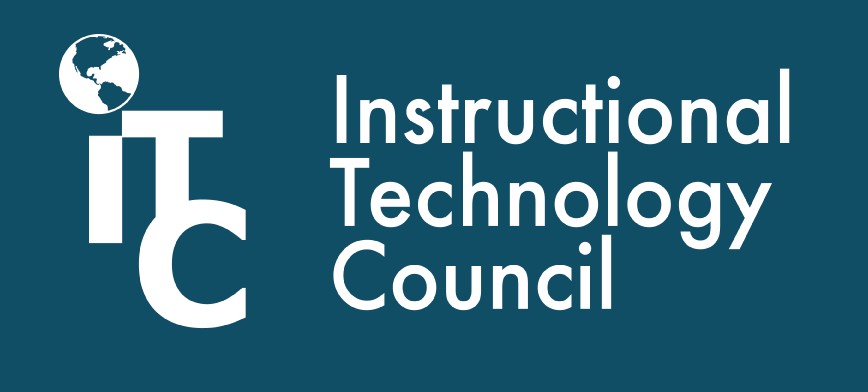
Every community college is dealing with the emergence of generative artificial intelligence; the positive implications for increased efficiencies, improved student services, more creative and relevant curriculum and the transformation of workforce readiness and training are profound.
However, community colleges need to confront certain realities that could impede our success in implementation including:
- The cost of the transformation of curriculum, services and workforce preparation will be substantial. We operate with significant fiscal limitations so need to be prudent and organized in our efforts to embrace Generative AI
- Limited staffing. Again, we will need to work with the staffing we have and, where possible, develop more creative ways to implement AI strategies on campus.
- Those we serve in the workplace likely don’t know what they need and we are equally ill-equipped to tell them.
This article is part of a monthly column provided by the Instructional Technology Council, an affiliated council of the American Association of Community Colleges.
A number of community colleges have been early standouts in their approach to generative AI, but for most community colleges, it is hard to even know where to start. The Instructional Technology Council (ITC) created an AI Affinity Group to bring together institutions and individuals that have been “early-adopters” and “early-adapters” of generative AI. The special panel has been methodical in its review of the essentials each community college needs to establish a productive approach to the exploration and implementation of generative AI.
The result: ITC recommendations regarding the 10 things your campus should be doing to launch generative AI:
1.) Develop initial policies to establish a framework for exploration and application. Campus policies for generative AI will always be a work in progress, but initial policies to consider include: Ethics – identifying parameters and guardrails for the ethical use of generative AI; Privacy – to protect students and staff and academic integrity – to strike a balance that reaffirms the criticality of academic integrity while opening the door to exploration and utilization rather than slamming the door shut.
2.) Create a permanent campus committee to oversee AI and emergent technologies. The committee will necessarily comprise campus stakeholder groups rather than technology experts (since campuses don’t have many experts – yet). Broad campus representation is critical to ensure a cross-section of voices are heard. In addition, the scope of the committee should include emergent technologies (virtual reality, for instance) since additional challenges are coming with other technologies as well.
3.) Secure funding to support professional development, exploration and implementation. The oversight committee will help to develop needed professional development training at a scale and scope that is unprecedented. Secure and regular funding will ensure that the training program can meet the needs of all campus stakeholder groups. ITC also encourages institutions to be proactive in seeking grant funding to supplement the costs of an extensive professional development program over several years. An increasing number of grant opportunities are emerging in this field, especially related to workforce development. There are increased opportunities to collaborate with other institutions and/or workforce partners.
4.) Identify the key stakeholders at your institution (key groups). This may vary, but for most institutions, the likely stakeholder groups include:
- Faculty (full- and part-time)
- Students
- IT support
- Administrators
- Student services
- Leadership
Recognizing these key groups will help to understand how to effectively tailor and diversify professional development training. Generative AI training cannot be “one size fits all”; rather it needs to be engaging and relevant to fit the needs of each particular stakeholder group.
5.) Create a culture of open dialog in with those that fear the emergence of AI can feel safe in expressing their concerns. On each campus, there are colleagues in each stakeholder’s group that perceive generative AI as an existential threat. Institutions should listen and promote dialogue. An approach that “reaches back” to ensure everyone moves forward is a positive an empathic approach that will promote greater buy-in in the long-term.
6.) Scaffold professional development (PD) for each identified stakeholder group. The oversight committee, working with the campus PD coordinator, should be developing a full-year generative AI professional development plan that includes sessions for each stakeholder group. In addition, the training should scaffold the training sessions to promote evolution and growth in understanding and application.
7.) Recognize the need to invite external expertise (most campuses do not have experts – need PD that engages, impresses and builds confidence). As previously mentioned, several campuses are leaders at the community college level. Rather than re-inventing the wheel, you can jump-start your exploration of generative AI by inviting presenters from those leaders. This may also lead to collaborations as well.
8.) Focus PD training on “how to explore/utilize” rather than on “how AI works.” For most of our colleagues, there is not a real desire to understand how generative AI works – after, most of us don’t understand our phones or other devices. Rather, most want to understand how to use this new technology and want specific strategies for implementation.
9.) Reach out to your community – determine what AI skills/abilities are needed in the local workforce – then build backwards to create the curriculum and training needed. Community colleges are different from universities. For community colleges, the best approach to generative AI is working backwards: learn what your local economy and workforce need/will need related to AI and other emergent technologies and then develop the degrees, certificates, skills certificates and soft skills to support your community. Admittedly, there is a risk that your community simply doesn’t know what it needs, but that creates an opportunity to work together to determine the needs as well as the college response to support those needs.
10.) Look for partners/collaborators both within higher education and in the greater community. You do not have to embark on this journey alone. The 21st century represents a paradigm shift in what we must learn, how to learn and how to adapt to a rapidly changing set of needs for the workforce. Partnerships with your community, with other higher education institutions, with local school districts and with organizations like the Instructional Technology Council can create a culture of connections and relevance. There are a variety of ways to foster this climate of collaboration; you can determine what works best for you.
The ITC AI Affinity Group will continue to assess generative AI and will share additional recommendations as warranted.





